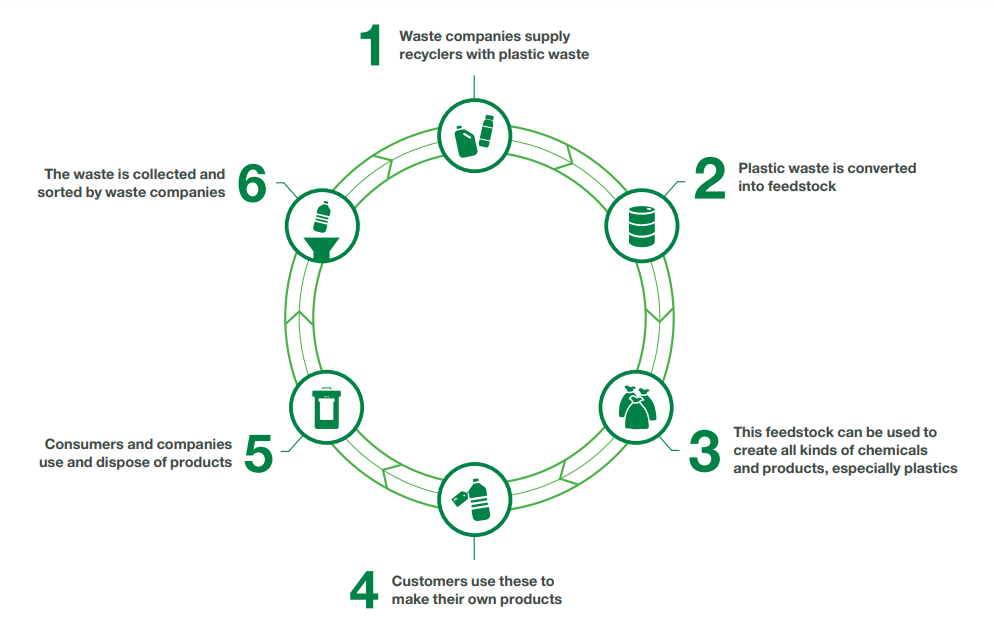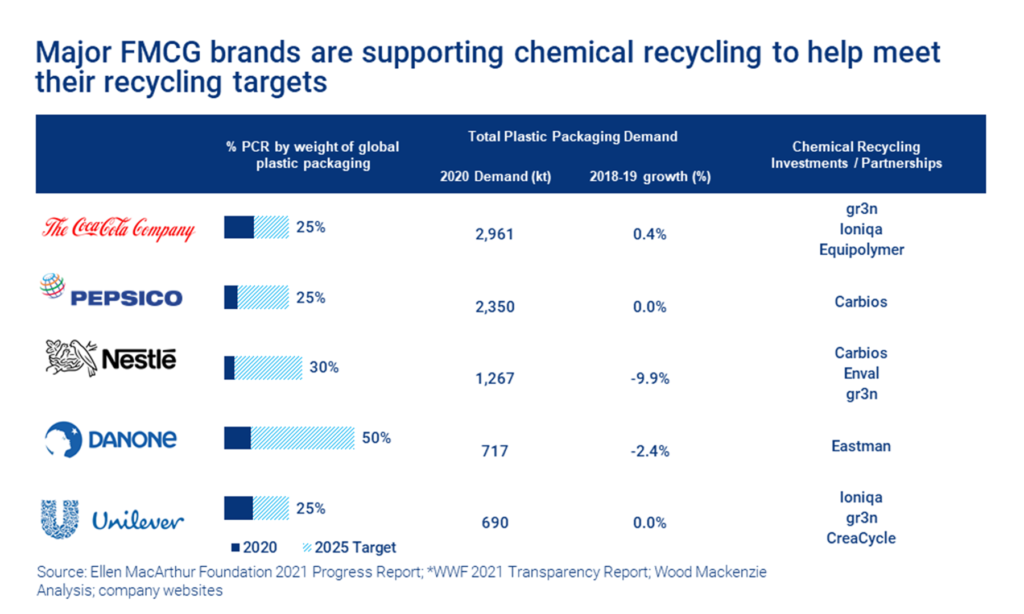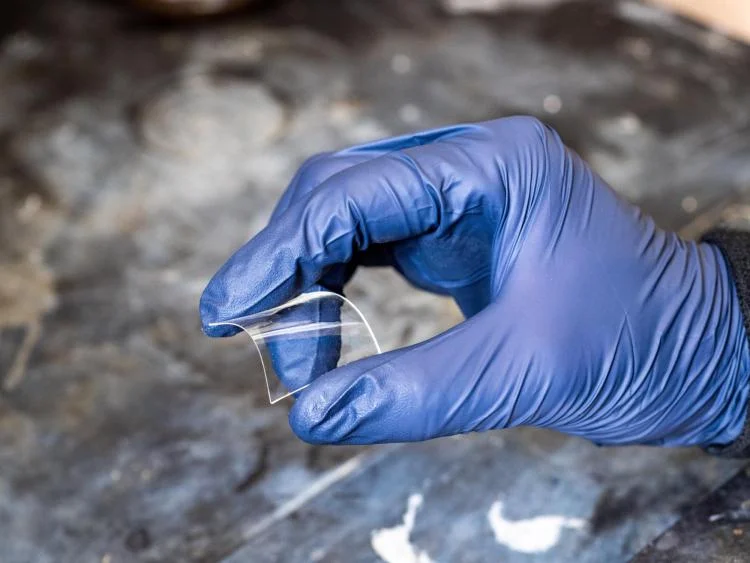Reduce, reuse and recycle work very well in theory, but in the latter case, only certain types of plastics can be processed using existing mechanical processes. Can new technologies like raw material recycling, chemical depolymerization, and solvent refining offer solutions?
Chemical processes will draw more materials into the circular economy.
Main Challenges
The problem of plastic waste may have grabbed the world’s attention recently, but plastic is still vital to the global economy. Global demand growth for plastic packaging is expected to slow in the coming decades, but the amount of plastic waste generated in 2040 will still be almost double what it is today.
Therefore, higher recycling rates are urgently needed to avoid more plastic polluting the environment. However, conventional mechanical recycling, which breaks down plastic into small pellets and preserves the polymer’s natural structure, is only suitable for specific packaging and use cases.

What are the advantages of chemical recycling?
The chemical recycling process has the potential to recover more than 50 million tons of plastic packaging waste currently considered ‘non-recyclable.’ Suitable materials include “non-bottle rigid packaging” (non-bottle rigid packaging), simple films, and even complex films (films composed of different layers of materials and coatings). Increase. The possibility of recycling a more comprehensive range of plastics can also increase the overall plastic waste collection rate.
In addition, chemical recycling yields virgin quality materials suitable for higher value end uses. It is also more tolerant of low-grade waste and can handle a wide variety of input materials, resulting in less loss in the process.
Several major brands, including Coca-Cola, PepsiCo, Nestlé, Danone, and Unilever, support chemical recycling and are already working with recyclers.

What are some uses for chemically recycled plastics?
There are many forms of chemical recycling. Raw material recycling involves plastic heating waste to produce hydrocarbon products or syngas.
Waste plastics can also be chemically broken down into building blocks or monomers in depolymerization. Alternatively, virgin quality polymers can be extracted by dissolving them in solvents.
Raw material recycling is already well positioned for commercial start-ups and offers significant cost advantages. On the other hand, depolymerization holds the most promise in addressing the critical challenge of providing recycled food-grade containers. Solvent cleaning is currently lagging in development but, in theory, offers the quickest and easiest way for plastic waste to be reentered into the value chain at a higher quality than mechanical recycling.
Can be Promising?
Chemical recycling is promising, but there are several barriers to widespread adoption. One problem is that chemical recycling is more carbon-intensive than mechanical recycling. Yield issues can also occur in commercial operations. However, one of the biggest challenges is getting enough raw material from the bale.
Since China enacted its national sword policy in 2018, there has been a gap between supply and demand for bales. This has banned imports of most plastics destined for recycling plants in the country. Given that China used to dispose of nearly half of the world’s recyclable waste, more plastic ends up in landfills, incinerators, or the environment.
More comprehensive collection in material recovery facilities and improved infrastructure are urgently needed. Funding may come from environmental laws such as Extended Producer Responsibility (EPR) and plastic taxes. Consistent regulation across the region also plays a vital role in lowering barriers to entry for chemical recycling and promoting stakeholder cooperation.

- Improving the sustainability of plastics in some sectors requires the production of durable or more durable polymers.
- These plastics must maintain their properties and performance over a reasonable period of use but must be designed from the ground up for controlled life scenarios.
- In particular, research on alternative reinforcing interactions to produce alternatives to thermosets and networks is a priority. Considering the use of non-covalent or equilibrium interactions to ensure that properties are provided while facilitating recycling and/or remanufacturing.
- Research should also focus on methods to control material crystallization and loss of crystallinity. Because, while the crystalline domains confer useful properties, the chain degrades slowly after use. Examples :Designing new plastics must take into account properties at multiple length scales, such as monomer sequences, polymer chain interactions, and nano- and microstructures. It is important to develop new experimental methods and theories to understand the relationship between polymer structure and properties.
- In the future, it may be possible to apply homoplastic composites, in which single polymer chemistry performs multiple functions through length-scale control. For example, the packaging ensures that only one material is used, and adhesives and barrier layers simplify recycling.
- Design data, analytical characterization methods, and models that inform both polymerization and depolymerization processes should be developed.
New Theory
New theories and methodologies are needed to accurately predict the performance and degradation of polymers over multiple lengths and time scales.
In the future, various recycled and reused chemical raw materials will be used in the production of polymers. These raw materials can and should also include products from the chemical recycling of existing plastics.
Since polymers are manufactured on a large scale, the decision of which monomer to use is heavily influenced by the availability and price of starting materials.
Technology economics and sustainability assessment should be integrated at appropriate stages of technology translation to ensure that basic research is covered.
Polymer manufacturing and processing infrastructure represent a large capital investment that must not be abandoned in the short term.
When designing polymers, a sustainability assessment of the material’s life cycle is important. For example, future materials should be designed to minimize toxicity and environmental impact.
As chemists find new ways to convert renewable molecules and recycled waste into polymers, they are optimizing these polymers so that they can eventually be broken down into environmentally friendly biochemicals and products. Design is important. Additionally, all new plastics are required to be easy to recycle and non-energy-intensive.


